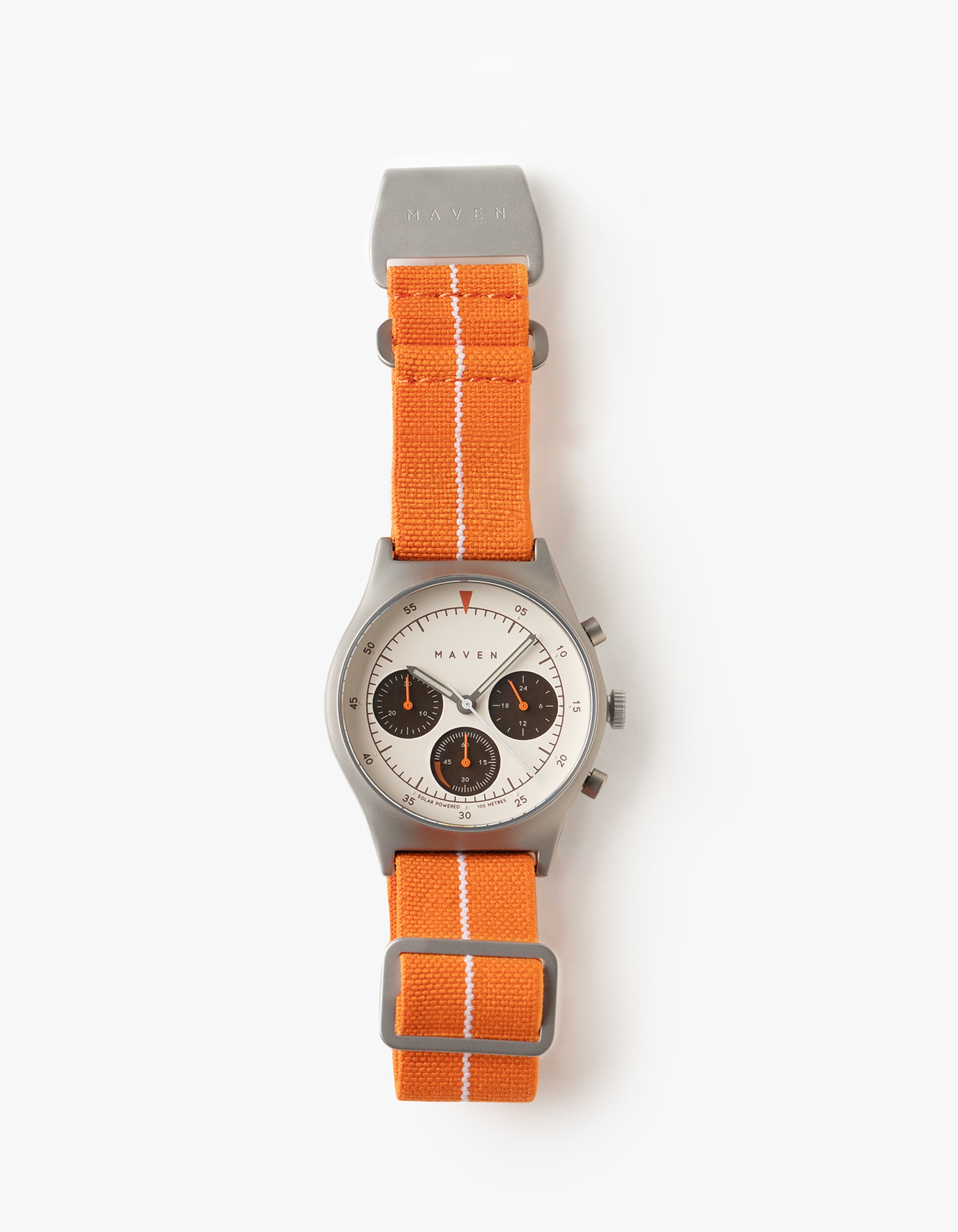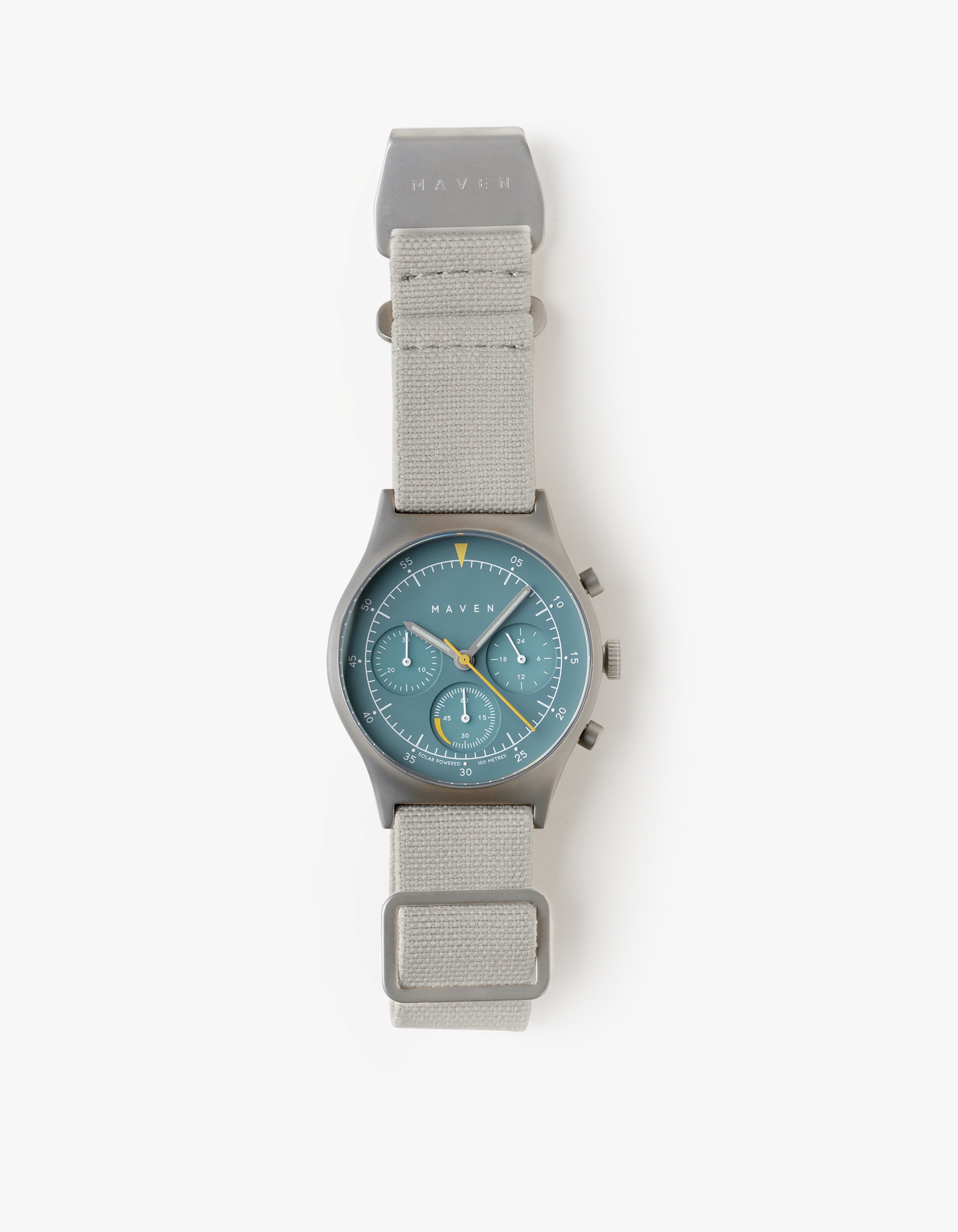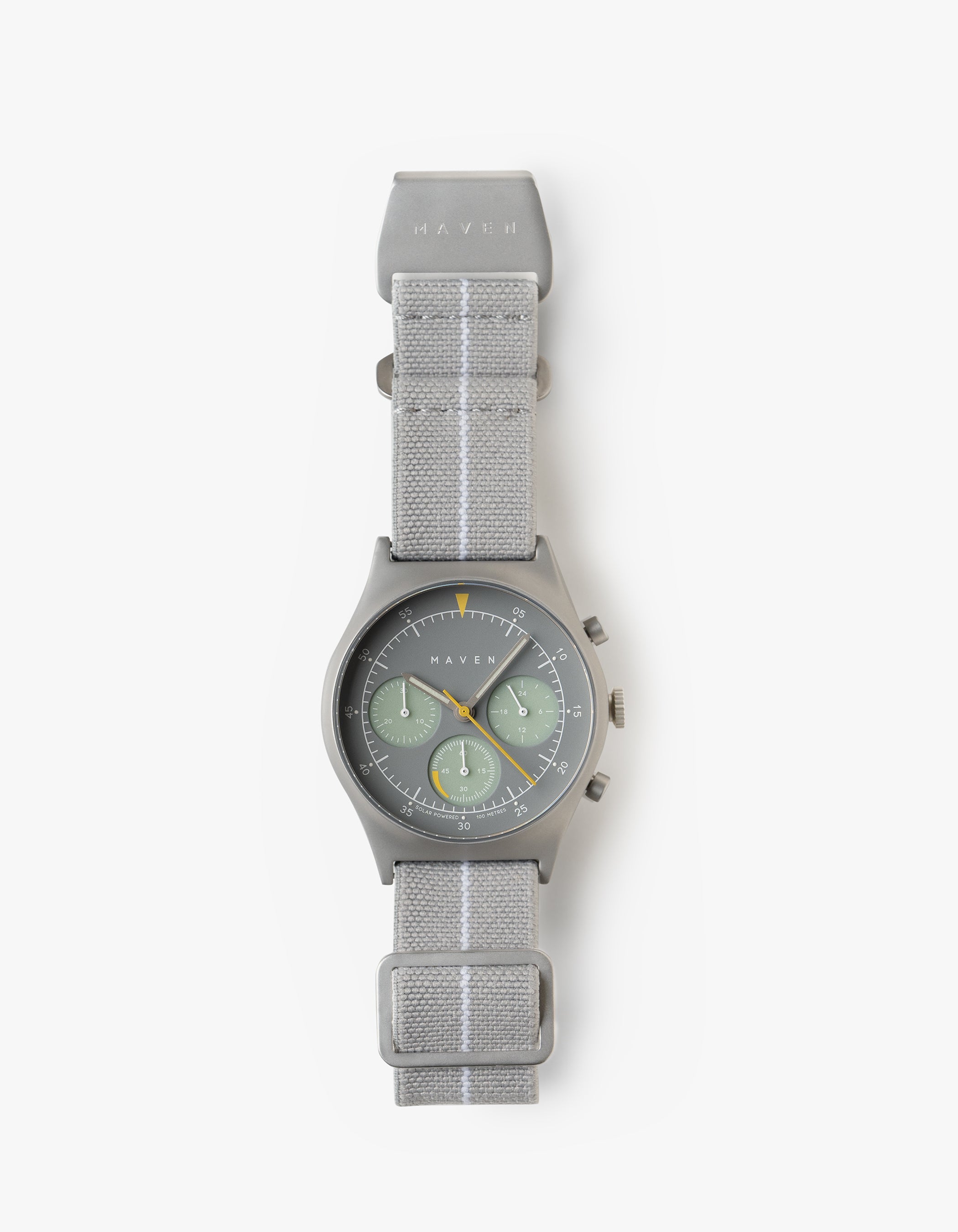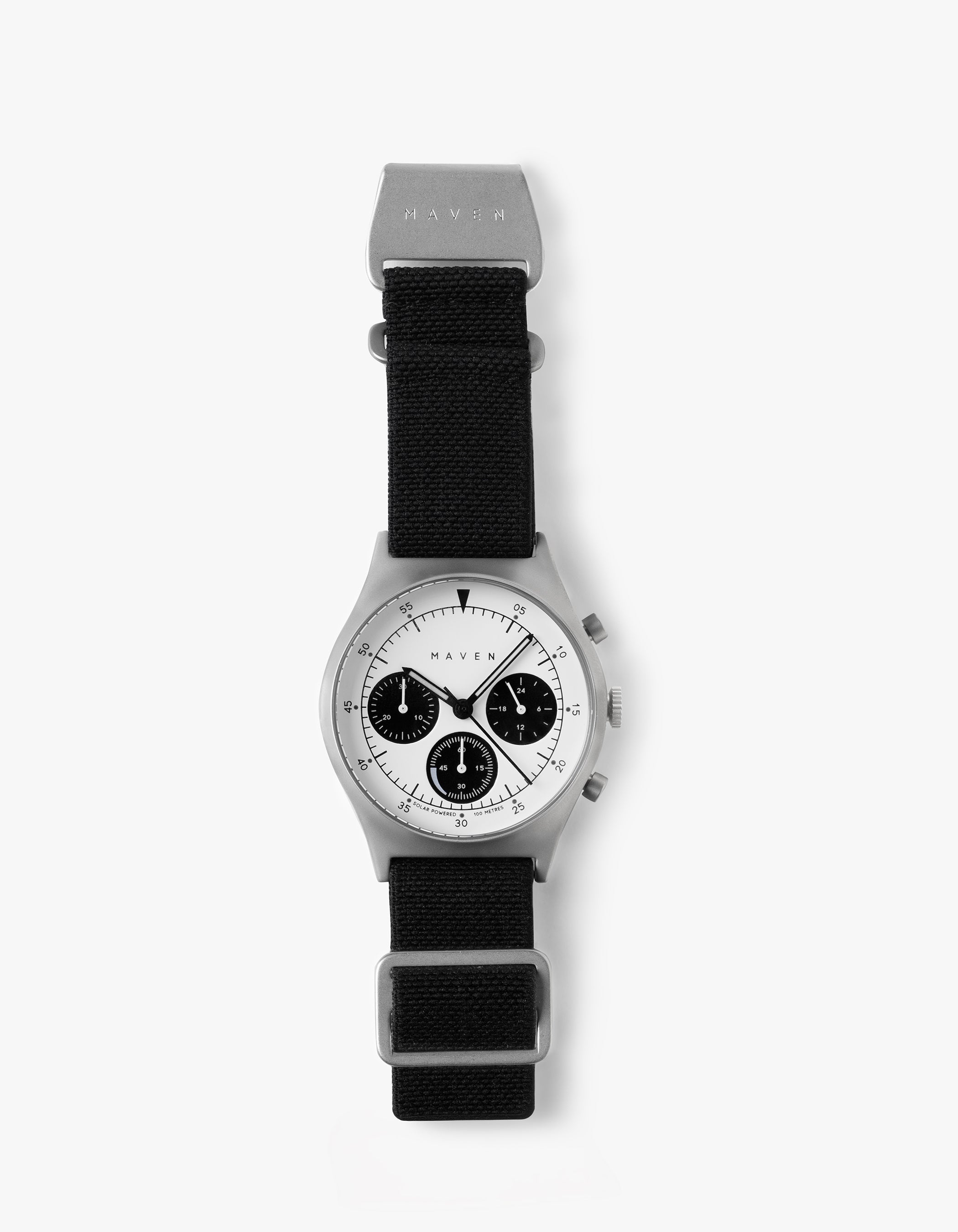Everything You Need To Know About Solar Watches

MAVEN’s solar watches offer a smarter, more sustainable way to tell time—charging through sunlight and requiring no battery changes. The MUS Solar Chrono elevates this technology with precise chronograph functionality, durable design, and MAVEN’s iconic minimalist style, making it a reliable, eco-conscious companion for everyday life. For a broader look at the science and evolution behind solar-powered timepieces, check out this in-depth guide on solar watches by Watch.co.uk.
How Do Solar Watches Charge?
Effective Charging Conditions ✓
|
Scenario: Outdoors (Direct sunlight) Illuminance (lx): 100,000 Exposure Time: 4–6 hrs Charging Efficiency: ★★★★★ |
Scenario: By a window (Sunny day) Illuminance (lx): 30,000 Exposure Time: 6–8 hrs Charging Efficiency: ★★★★☆ |
Scenario: 30W Fluorescent Illuminance (lx): 10,000 Exposure Time: 8–10 hrs Charging Efficiency: ★★★☆☆ |
Ineffective Charging Conditions ✗
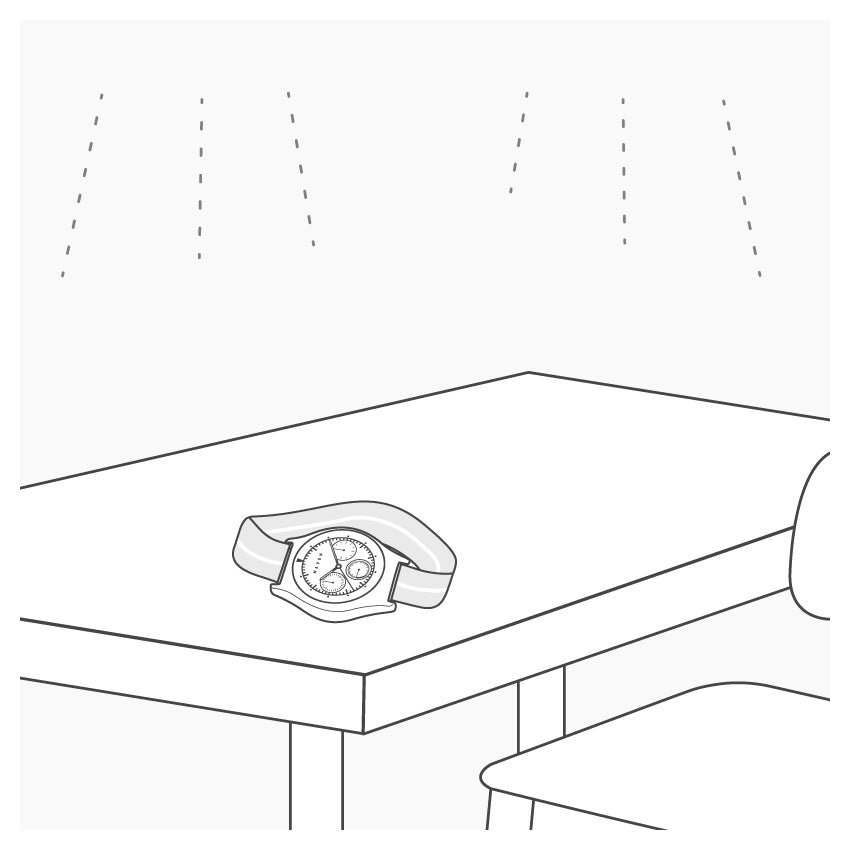 |
||
|
Scenario: Covered by sleeve Illuminance: 0 Charging Efficiency: Ineffective |
Scenario: In drawer Illuminance: 0 Charging Efficiency: Ineffective |
Scenario: On desk Illuminance: 500–700 Charging Efficiency: Ineffective |
Charging Time Guide
| Illuminance (lx) | Light Source | Condition | Time to Full Charge | Time to 1-Second Movement |
|---|---|---|---|---|
| 700 | Fluorescent | Office | - | - |
| 3,000 | Fluorescent | 30W / 20cm | 80 hrs | 6 hrs |
| 10,000 | Fluorescent | 30W / 5cm | 40 hrs | 2 hrs |
| 30,000 | Sunlight | Window | 8 hrs | 1 hr |
| 100,000 | Sunlight | Direct | 6 hrs | 30 min |
The Difference Between Solar Watches And Quartz Watches

Both solar and quartz watches use quartz crystal oscillators. However, quartz watches run on disposable batteries, while solar watches harness light and store energy in a rechargeable battery. Solar watches are an advanced, low-maintenance, and eco-conscious evolution of quartz timekeeping.
Curious how solar watches compare to quartz and automatic models? We break it down in this guide.
Tips For Maintaining Your Solar Watch
- Charge in Direct Sunlight: For fastest and most effective results.
- Expose the Dial: Keep the dial fully visible to light.
- Avoid Overheating: Operate within -10°C to +50°C.
- Fully Charge Before Use: Especially for first-time or restarted use.
- Don’t Store in Darkness: Avoid prolonged storage in drawers or under sleeves.
- Office Light Isn’t Enough: Indoor lighting often lacks power for reliable charging.
Top Reasons To Choose MAVEN Solar Watches

- Solar-Powered Movement: Japanese Seiko Epson movement with up to 5 months battery life.
- Chronograph Functionality: Measures up to 30 mins, with power reserve indicator.
- Distinctive Parachute Strap: Inspired by French military divers, designed for comfort and breathability.
Frequently Asked Questions About Solar Watches
A solar-powered watch uses a built-in solar panel—typically integrated into the dial—to convert light into energy. This energy is stored in a rechargeable battery that powers the watch without needing regular battery replacements.
Solar watches do not require frequent battery changes like traditional quartz watches. However, the internal rechargeable battery may need replacement after many years of use, especially if the watch is not regularly exposed to light.
Most solar watch batteries can last 10 years with proper care and regular light exposure. The solar panel itself is also designed to perform reliably over decades.
If a solar watch is kept in the dark for extended periods, it may stop working due to a drained battery. To keep it running optimally, expose it to natural or artificial light regularly.
To speed up the charging process, place your watch under direct sunlight or use a high-intensity artificial light source such as an LED light box. Some users also purchase dedicated solar watch chargers, which simulate sunlight to recharge your watch more efficiently, especially in low-light environments.

